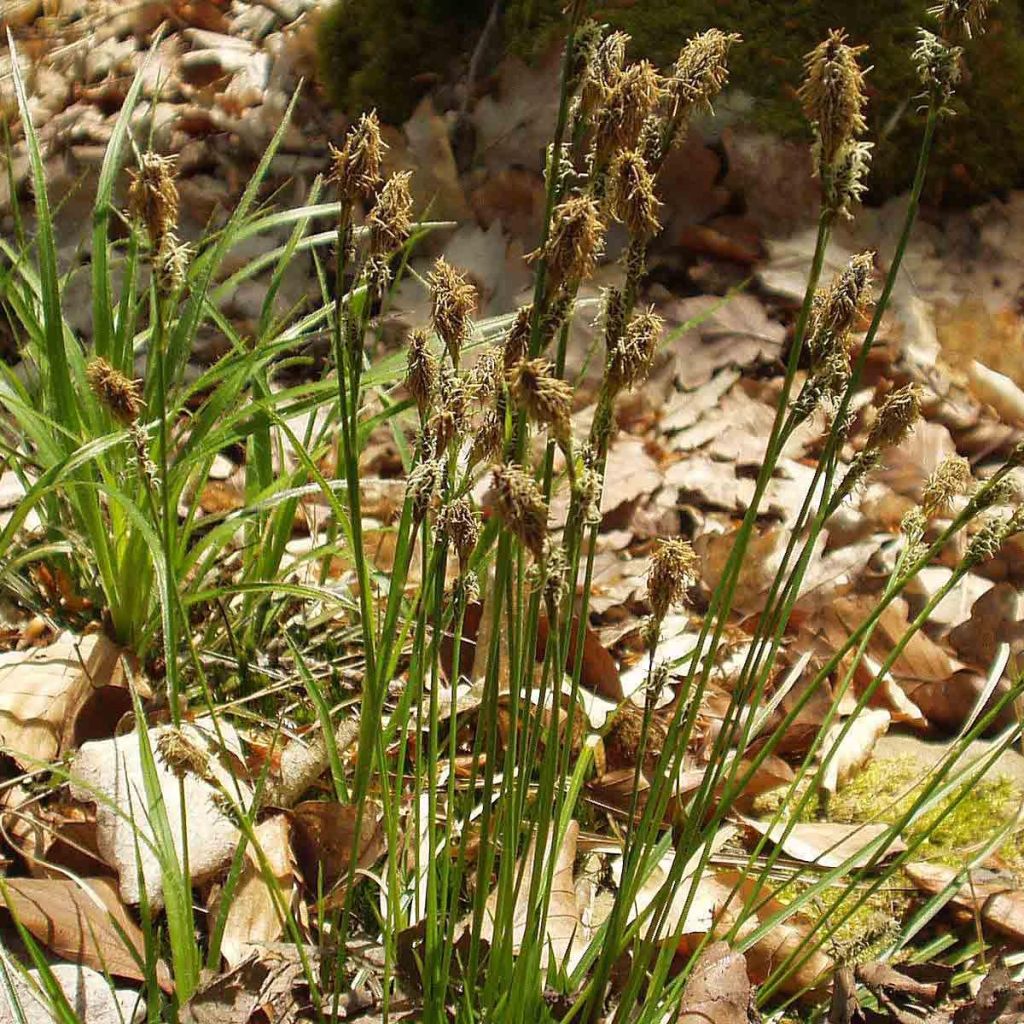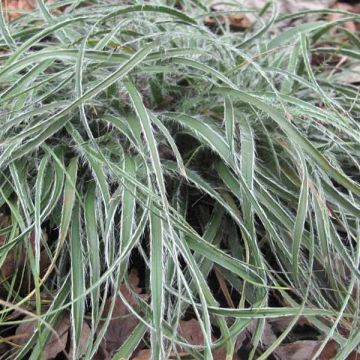

Carex umbrosa
Carex umbrosa
Carex umbrosa
Sedge
Special offer!
Receive a €20 voucher for any order over €90 (excluding delivery costs, credit notes, and plastic-free options)!
1- Add your favorite plants to your cart.
2- Once you have reached €90, confirm your order (you can even choose the delivery date!).
3- As soon as your order is shipped, you will receive an email containing your voucher code, valid for 3 months (90 days).
Your voucher is unique and can only be used once, for any order with a minimum value of €20, excluding delivery costs.
Can be combined with other current offers, non-divisible and non-refundable.
Home or relay delivery (depending on size and destination)
Schedule delivery date,
and select date in basket
This plant carries a 12 months recovery warranty
More information
We guarantee the quality of our plants for a full growing cycle, and will replace at our expense any plant that fails to recover under normal climatic and planting conditions.
Would this plant suit my garden?
Set up your Plantfit profile →
Description
Carex umbrosa, also known as Shady Sedge or the many-rooted sedge (Carex polyrrhiza), possesses the simple elegance and robustness of wild plants. This modest-sized grass is widespread in cool undergrowth and forest edges. In the garden, it forms a dense trailing clump composed of very fine, vibrant green leaves. Its inconspicuous yet graceful inflorescences appear in spring among the foliage, composed of brown spikes. It is a hardy, low-growing perennial that is appreciated for its natural charm and its ability to cover and stabilise shaded areas of the garden. Plant it in moist, even clayey soil, in partial shade or full shade.
Carex umbrosa is a sedge native to central Europe, most commonly found in slightly shaded acidic clay soil in forested locations. This 'grass' belongs to the large Cyperaceae. It is a low-growing species with short rhizomes, forming a clump about 30cm (12in) tall and wide. Its narrow, linear leaves, which remain evergreen in winter, measure 2 to 4mm (1in) wide and approximately 45cm (18in) long. They have a rough texture, with tapered edges and drooping tips. From April to July, inflorescences appear just above the foliage, carried by slender culms measuring 40 to 50cm (16 to 20in) tall. Each inflorescence consists of a terminal male brown spike surmounting 2 or 3 distinct female spikes that turn green to blonde at maturity.
In partial shade, it forms a dense foliage bouquet that conceals the ground and discourages adventive plants. It can be paired with Anemone nemorosa or hostas, which tolerate the same growing conditions. It also provides a beautiful backdrop for spring-flowering bulbs such as narcissus, crocus, and botanical tulips. While not spectacular, this plant brings a sense of lightness to the lush foliage of rodgersias and the fronds of ferns, and pairs well with heucheras. Place it along the edges of perennial borders as well. For a wild and natural effect, plant it en masse in a contemporary or countryside garden, even in heavy clay soil.
Report an error about the product description
Carex umbrosa in pictures


Flowering
Foliage
Plant habit
Botanical data
Carex
umbrosa
Cyperaceae
Sedge
Central Europe
Other Carex
View all →Planting and care
Carex umbrosa prefers moist, moderately fertile, rather acidic soils, but also tolerates sporadically dry soils. It thrives in a partly shady or even fully shady exposure. This sedge is very hardy and very accommodating. It will grow in soil with a clay tendency if it is not calcareous. It is easy to cultivate, and well adapted to many climates (oceanic, Atlantic or alpine). It requires very little maintenance. Plant outside frost periods and water abundantly during planting. Avoid heavy fertiliser inputs. Remove damaged foliage during the growing season and possibly prune the clump lightly at the end of winter, just before the start of vegetation.
Planting period
Intended location
Care
This item has not been reviewed yet - be the first to leave a review about it.
Similar products
Haven't found what you were looking for?
Hardiness is the lowest winter temperature a plant can endure without suffering serious damage or even dying. However, hardiness is affected by location (a sheltered area, such as a patio), protection (winter cover) and soil type (hardiness is improved by well-drained soil).

Photo Sharing Terms & Conditions
In order to encourage gardeners to interact and share their experiences, Promesse de fleurs offers various media enabling content to be uploaded onto its Site - in particular via the ‘Photo sharing’ module.
The User agrees to refrain from:
- Posting any content that is illegal, prejudicial, insulting, racist, inciteful to hatred, revisionist, contrary to public decency, that infringes on privacy or on the privacy rights of third parties, in particular the publicity rights of persons and goods, intellectual property rights, or the right to privacy.
- Submitting content on behalf of a third party;
- Impersonate the identity of a third party and/or publish any personal information about a third party;
In general, the User undertakes to refrain from any unethical behaviour.
All Content (in particular text, comments, files, images, photos, videos, creative works, etc.), which may be subject to property or intellectual property rights, image or other private rights, shall remain the property of the User, subject to the limited rights granted by the terms of the licence granted by Promesse de fleurs as stated below. Users are at liberty to publish or not to publish such Content on the Site, notably via the ‘Photo Sharing’ facility, and accept that this Content shall be made public and freely accessible, notably on the Internet.
Users further acknowledge, undertake to have ,and guarantee that they hold all necessary rights and permissions to publish such material on the Site, in particular with regard to the legislation in force pertaining to any privacy, property, intellectual property, image, or contractual rights, or rights of any other nature. By publishing such Content on the Site, Users acknowledge accepting full liability as publishers of the Content within the meaning of the law, and grant Promesse de fleurs, free of charge, an inclusive, worldwide licence for the said Content for the entire duration of its publication, including all reproduction, representation, up/downloading, displaying, performing, transmission, and storage rights.
Users also grant permission for their name to be linked to the Content and accept that this link may not always be made available.
By engaging in posting material, Users consent to their Content becoming automatically accessible on the Internet, in particular on other sites and/or blogs and/or web pages of the Promesse de fleurs site, including in particular social pages and the Promesse de fleurs catalogue.
Users may secure the removal of entrusted content free of charge by issuing a simple request via our contact form.
The flowering period indicated on our website applies to countries and regions located in USDA zone 8 (France, the United Kingdom, Ireland, the Netherlands, etc.)
It will vary according to where you live:
- In zones 9 to 10 (Italy, Spain, Greece, etc.), flowering will occur about 2 to 4 weeks earlier.
- In zones 6 to 7 (Germany, Poland, Slovenia, and lower mountainous regions), flowering will be delayed by 2 to 3 weeks.
- In zone 5 (Central Europe, Scandinavia), blooming will be delayed by 3 to 5 weeks.
In temperate climates, pruning of spring-flowering shrubs (forsythia, spireas, etc.) should be done just after flowering.
Pruning of summer-flowering shrubs (Indian Lilac, Perovskia, etc.) can be done in winter or spring.
In cold regions as well as with frost-sensitive plants, avoid pruning too early when severe frosts may still occur.
The planting period indicated on our website applies to countries and regions located in USDA zone 8 (France, United Kingdom, Ireland, Netherlands).
It will vary according to where you live:
- In Mediterranean zones (Marseille, Madrid, Milan, etc.), autumn and winter are the best planting periods.
- In continental zones (Strasbourg, Munich, Vienna, etc.), delay planting by 2 to 3 weeks in spring and bring it forward by 2 to 4 weeks in autumn.
- In mountainous regions (the Alps, Pyrenees, Carpathians, etc.), it is best to plant in late spring (May-June) or late summer (August-September).
The harvesting period indicated on our website applies to countries and regions in USDA zone 8 (France, England, Ireland, the Netherlands).
In colder areas (Scandinavia, Poland, Austria...) fruit and vegetable harvests are likely to be delayed by 3-4 weeks.
In warmer areas (Italy, Spain, Greece, etc.), harvesting will probably take place earlier, depending on weather conditions.
The sowing periods indicated on our website apply to countries and regions within USDA Zone 8 (France, UK, Ireland, Netherlands).
In colder areas (Scandinavia, Poland, Austria...), delay any outdoor sowing by 3-4 weeks, or sow under glass.
In warmer climes (Italy, Spain, Greece, etc.), bring outdoor sowing forward by a few weeks.



















































